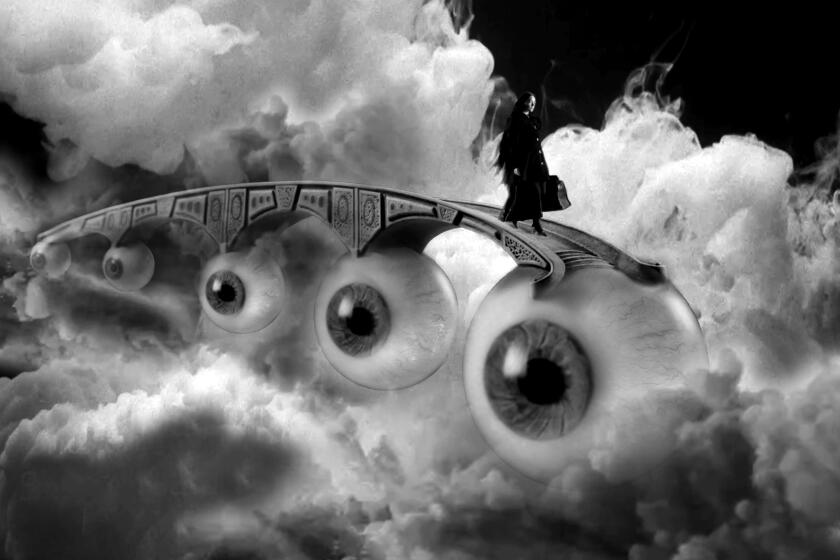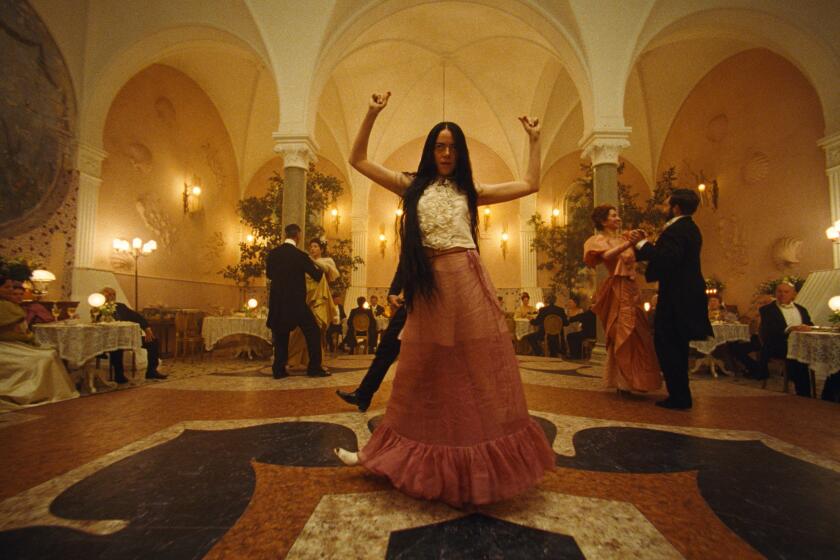For ‘Poor Things,’ first they created the world. Then they found ways to give it a sky
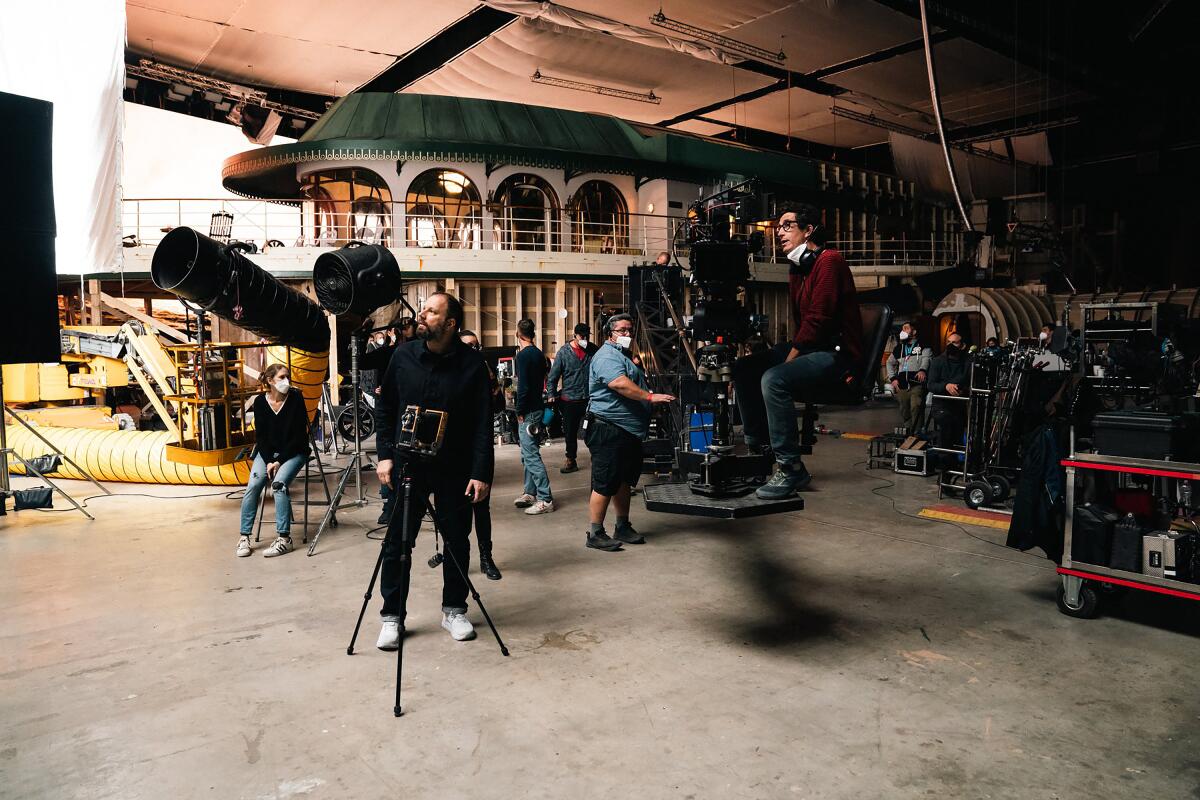
- Share via
For “Poor Things,” Robbie Ryan’s second Oscar-nominated collaboration with “The Favourite” director Yorgos Lanthimos and star Emma Stone, the cinematographer explored new 35-millimeter film stocks, techniques and equipment. Also, surreal ways of visualizing Victorian Europe through the eyes of Bella Baxter, Stone’s pregnant suicide whom a mad scientist reanimates with her infant’s brain. Ryan’s camera, which he typically operated himself, also captured more sex and nudity than in any previous job — or 20 of them put together.
Since he caught the bug making Super 8 movies with his brother and cousins in 1980s Dublin, the Irish DP has worked in a number of styles with distinctive auteurs: Ken Loach’s kitchen sink realism (“I, Daniel Blake”), naturalistic with formal innovation for Andrea Arnold (early CCTV-centric “Red Road”), Noah Baumbach’s domestic pressure cookers (“Marriage Story”).
Production designers Shona Heath and James Price were given a creative direction like no other: to make the world look like nothing has ever looked before.
On a Zoom call from outside Edinburgh, where he’s reteamed with “Slow West” director John Maclean for the crime thriller “Tornado,” the affable, laser -focused Ryan noted that he’s already shot his third film with Lanthimos and Stone, Searchlight’s anamorphic anthology “Kinds of Kindness.”
“I’ve said this every interview I’ve done: Yorgos is the cinematographer, really,” Ryan humbly defers. Pardon us if we don’t entirely believe that.
“Poor Things” is like “Bride of Frankenstein” told from her point of view. How much did Universal’s gothic horror movies influence the look you were going for?
Yorgos definitely mentioned James Whale; his “Frankenstein” films were seminal, y’know? The funny thing was, we wanted to use the real sparks and electricity you watch in Whale’s films, but the health-and-safety element were very much, “That’s absolutely not allowed!” VFX helped out in the end, but it was frustrating trying to do something that 100 years ago wasn’t a big problem — because there was no health-and-safety [laughs].
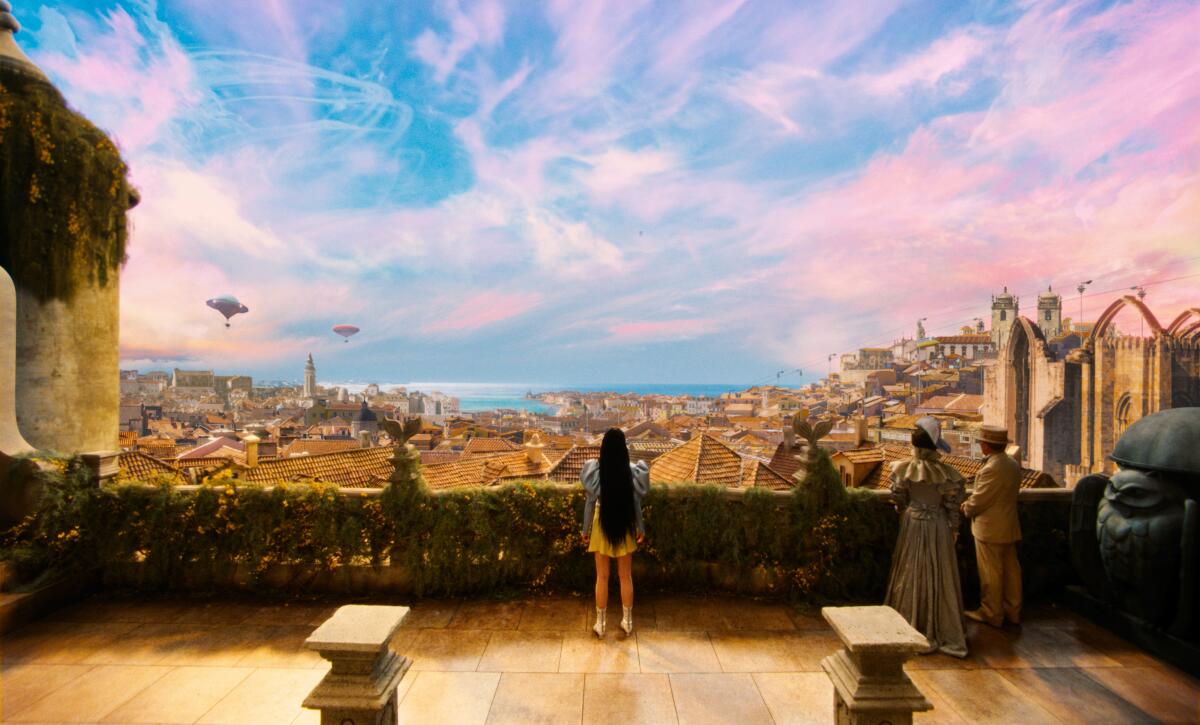
Nor were there intimacy coordinators. How nuts did you drive each other?
No! We had an amazing woman named Elle McAlpine. I’d never worked with intimacy advisors before. She was great; I thought she was gonna come in and go, “You can’t do that.” She was the complete opposite. She was like, “What do you want to do? Let’s experiment here.” She was a wonderful presence on the set and very valuable for Emma and all of us.
Why all the fisheye shots, arcing camera choreography and such?
Yorgos had a pretty definitive lens style in mind, and the camera movement in “The Favourite” was quite distinctive. So we evolved that into this. There was a lot of testing; we got it down to essentially five lenses, which were a zoom, some wide lenses and portrait lenses. We filmed, then, on one camera, on a dolly most of the time. Very simple.
Doesn’t look simple.
It looks complex in the final piece, yeah. Yorgos really likes the Rainer Werner Fassbinder films where the dolly moves and it zooms in and out. That was the new hook for me. The troublesome part was that he wanted to achieve it with a very wide zoom going into a very tight zoom. We struggled with that, and we ended up with a lens that was 16.5 to 110. Worked out pretty well.

Talk about your various uses of color and black and white.
Yorgos would be happy to shoot a black-and-white feature more than anything, and he was keen to give it a place in this film. He rationalized that it would be better to do all of London in black and white and then go to color for the flashbacks. The black and white returns, but generally once we get to Lisbon, it’s color from there in. He loves color and contrast and had read about Ektachrome being used on a TV show called “Euphoria.” We tried that out and processed it in E6 so that it comes back as a positive. It looked great.
Almost every set was specifically built, but it sounds like lighting them could have been a nightmare.
No nightmares, just challenges. This world was completely fabricated; there were six soundstages with sets all built within them we had to light. Yorgos wanted no [movie] lights on them, which made it easier for me in a way, because I could just make big skies within each stage. That’s obviously labor-intensive, and there were a lot of lights involved, but the concept is simple: Create a sky to light all of the sets that are within the space. We’d also use practical lighting within the set, and shooting on film leans into that kind of natural photography. We did that with all of the interior stage sets.
The idea of manipulated flesh is reflected in the pinky skin tones and clothing surfaces and silhouettes that recall body parts, which costume designer Holly Waddington cleverly exploits.
Each stage contained connecting rooms and areas surrounding the building, correct?
What’s great is you can look out their windows and see the world outside. All of the sets were built as composite. Shona Heath and James Price did an amazing job designing a set where you would walk in the front door, go up the stairs and into the bedroom, film all of that and it would feel like it was a real location. That made life so much simpler for us; it negated the need for any green screen or anything like that. Some of the rooms we didn’t even shoot in!
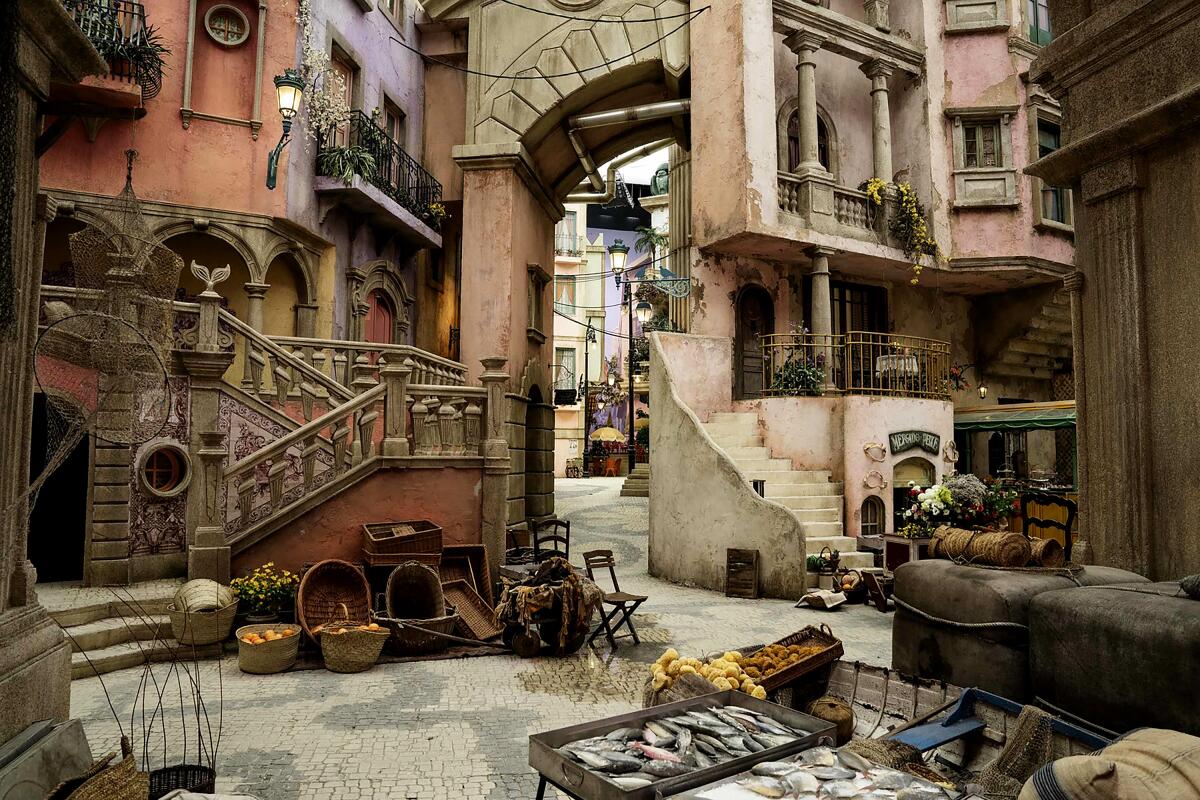
Lisbon appears to be the most elaborate of those, with lots of action out in the city as well as inside the hotel, bars and cafes.
We filled the biggest soundstage in Europe at the time with Lisbon. The only VFX work was replacing skies and maybe a bit of building extensions, but the buildings were there. It was like this big theme park. It was tough, because we were mainly based at Origo Studios outside of Budapest, but that was at another studio called Korda, which was a 2½-hour drive. It was one of the hardest interior soundstages to light, because it was meant to be a sunny, Lisbon kind of world. I struggled with that one because of the scale of it.
The cruise ship was another elaborate build, but didn’t you have to make your own environment for it?
We weren’t out at sea. Yorgos was keen to redo old cinema techniques like back projection, things he’d seen in 1930s cinematography, with a 2022 slant on it. LED technology now is amazing. Our approach wasn’t to do a volume room; we just wanted a backdrop. The ship was quite big, so we ended up with a 200-foot-long-by-70-foot-high wall, like the biggest LED billboard you’ve ever seen. Union VFX built seven different skies that were put into the wall and became our view out the window. It was brilliant, but the practical problem was when we filmed scenes on deck looking out over these beautiful skies, spill from lighting people would hit the wall and dull it down. The only way around it is to completely separate the lighting so it only hits the subject. It was a trial-and-error approach, because I hadn’t really done that before.
That went for a lot of things on this film.
More to Read
From the Oscars to the Emmys.
Get the Envelope newsletter for exclusive awards season coverage, behind-the-scenes stories from the Envelope podcast and columnist Glenn Whipp’s must-read analysis.
You may occasionally receive promotional content from the Los Angeles Times.
